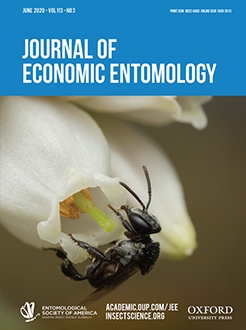Use of heated air to create lethal temperatures within infested wood serves as a nonchemical treatment option against western drywood termites, Incisitermes minor (Hagen). When treating a whole or large portion of the structure, however, the presence of hard-to-heat areas (structural heat sinks) and potential risk of damaging heat-sensitive items are recognized as important challenges. To address these challenges, we tested if the incorporation of a volatile essential oil would increase the overall efficacy of heat treatments against the drywood termites. To choose an essential oil for use, we tested the volatile action of several candidate compounds against individual termites using a fumigant toxicity assay. As a proof-of-concept experiment, field-collected termites were housed in small wooden arenas and subsequently subjected to 2-h heat treatment at various air temperatures within a gas chromatography oven. A simulated heat sink and essential oil treatment was also included in the experimental design. Analyses of lethal temperatures (LTemp50 and LTemp99 values), probabilities of mortality, and survivorship data over time suggested that 1) the presence of a heat sink significantly increased the minimum air temperature needed for complete kill of the termites and 2) the volatile essential oil added at the site of a heat sink effectively counteracted the impact of the heat sink. The use of volatile essential oils makes it possible to effectively kill drywood termites even in areas which might not reach lethal temperatures (∼50°C), potentially improving the overall efficacy of heat treatments while reducing the risk of heat damage.
BioOne.org will be down briefly for maintenance on 17 December 2024 between 18:00-22:00 Pacific Time US. We apologize for any inconvenience.
How to translate text using browser tools
26 January 2020
Volatile Essential Oils Can Be Used to Improve the Efficacy of Heat Treatments Targeting the Western Drywood Termite: Evidence from a Laboratory Study
Daniel T. Perry,
Dong-Hwan Choe
ACCESS THE FULL ARTICLE
It is not available for individual sale.
This article is only available to subscribers.
It is not available for individual sale.
It is not available for individual sale.

Journal of Economic Entomology
Vol. 113 • No. 3
June 2020
Vol. 113 • No. 3
June 2020
drywood termite
heat
methyl salicylate
treatment




